Famous sites like Ueno Park and Sensoji temple look amazingly like they do today, but the people look entirely different.
Japan is filled with historic sites that still stand today with centuries of history behind them. And while pamphlets, guides, and even ages-old ukiyoe prints do their best to paint a picture of this history for visitors to the country, nothing tells the story quite like a moving image, especially when they include everyday scenes that show people of the time living their lives in the shadow of famous monuments and natural formations.
Now it’s time to take a peek at the past with a new video showing some amazing scenes of daily life filmed in Tokyo and Mount Fuji between the years of 1897-1915. Interspersed with some scenes from today, these black-and-white images capture the mood of the period, with young children playing games, carrying siblings on their backs, and going on school excursions while surrounded by adults dressed in kimono from the Meiji era (1868-1912) and the East-meets-West fashion style of the Taisho Period (1912-1926).
Take a look at the video below:
https://www.youtube.com/watch?v=13mwpwMucsI
The clip starts with some grainy footage, showing a rickshaw rider alighting from a ride dressed in a coat and top hat, which was originally filmed by French filmmaker and visual travelogue pioneer Constant Girel in Tokyo’s Nihonbashi in 1897. The video then transitions to modern-day Japan with a walk through the streets of Nihonbashi (literally “Japan Bridge”), which is well-known for being Tokyo’s traditional centre of commerce and has been the kilometre-zero marker for the country’s national highways since the 17th century.
After a minute’s stroll, we step back in time once again, this time to view “Japan Under The Snow” at a village “on a slope of the Fouzi-Yama” (富士山, the Japanese for “Fuji-san”, or Mt Fuji, is transcribed here as “Fouzi-Yama”).
▼ Here, children enjoy snowball fights and stilt-walking, while ladies shelter under parasols.
The video then takes us back to today’s world, with a snowy scene filmed at Shirakawa-Go, a UNESCO World Heritage Site located in Gifu Prefecture. Then it’s back to 1913-1915, with fascinating views of Tokyo showing some familiar places that haven’t really changed all that much, even today.
▼ There are scenes showing the huge lanterns at Asakua’s Sensoji temple…
And scenes showing people enjoying “to the fullest the pleasures afforded by the numerous parks of the Empire” at Ueno Park in Tokyo (written out as “Uyeno Park, Tokio” in the film). The park was then, as it is now, “a very popular place, especially on Sunday afternoons”.
▼ The famous sakura trees at Ueno Park are bare in this winter scene, with people rugged up in coats over their kimonos outside restaurant buildings that still stand today.
While some children play and jostle for the camera’s attention, others help to look after their siblings by carrying them around on their backs, at a time when mothers were busy with big families at home.
The clip then ends at about 9:45, with the remainder of the video showing the busy streets of Shibuya today. Somehow, there’s a little less charm with people walking around in modern-day clothing, instead of kimonos and top hats, yet we’re left with a deeper appreciation of the city and the people who once walked about inside it. And now we’re inspired to go for a deep dive into Japan’s past with more videos and photos from the country’s archives!
Source: YouTube/Historic Video Archive
Images: YouTube/Historic Video Archive
● Want to hear about SoraNews24’s latest articles as soon as they’re published? Follow us on Facebook and Twitter!

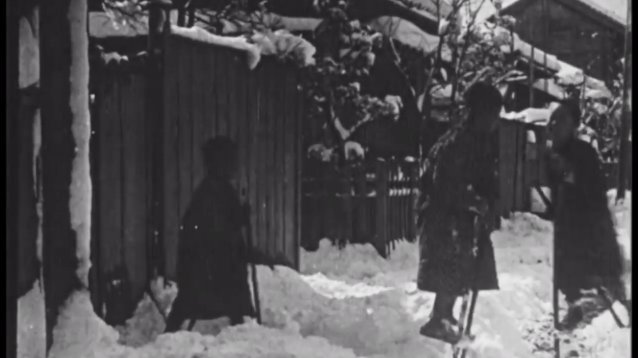
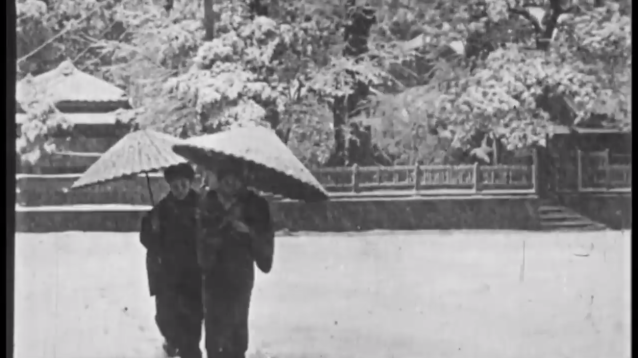
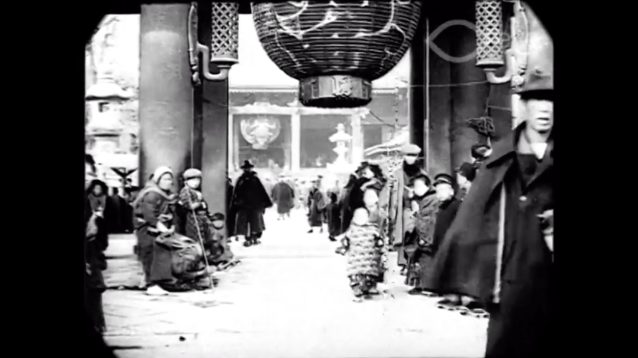
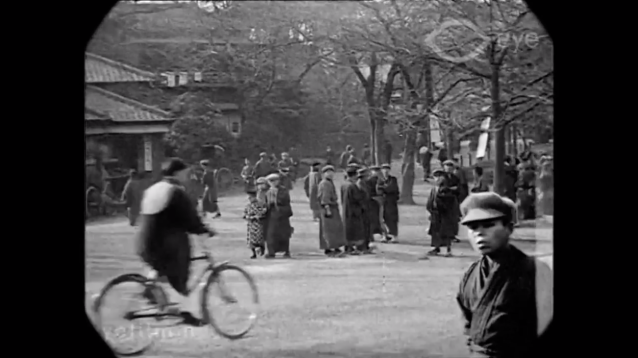
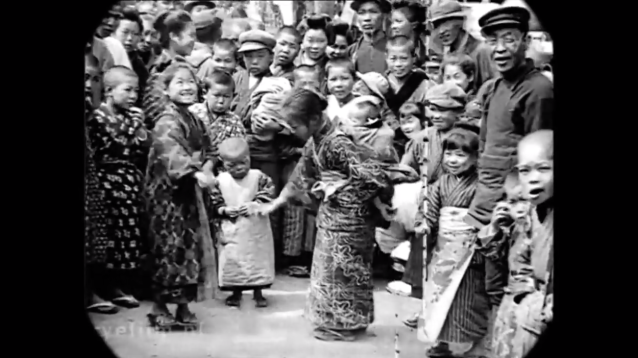
 122-year-old video of downtown Tokyo shows how much Japan’s capital has changed【Video】
122-year-old video of downtown Tokyo shows how much Japan’s capital has changed【Video】 Old postcards reveal famous Japanese tourist spots as they appeared 100 years ago
Old postcards reveal famous Japanese tourist spots as they appeared 100 years ago Tokyo in 60 frames-per-second, 107 years in the past, looks amazing【Video】
Tokyo in 60 frames-per-second, 107 years in the past, looks amazing【Video】 Street footage from Hollywood movie “Tokyo Joe” shows post-war Shibuya colourised by AI 【Video】
Street footage from Hollywood movie “Tokyo Joe” shows post-war Shibuya colourised by AI 【Video】 Breathtaking pixel art video shows 100 years of Japanese work culture changes【Video】
Breathtaking pixel art video shows 100 years of Japanese work culture changes【Video】 Pizza Hut Japan’s hot lucky bags are perfect for a New Year’s pizza party
Pizza Hut Japan’s hot lucky bags are perfect for a New Year’s pizza party Hayao Miyazaki says Happy New Year to Studio Ghibli fans with new art for Year of the Horse
Hayao Miyazaki says Happy New Year to Studio Ghibli fans with new art for Year of the Horse Harajuku’s new permanent Tamagotchi shop is filled with cuteness and a surprising lack of poop
Harajuku’s new permanent Tamagotchi shop is filled with cuteness and a surprising lack of poop On-warabimochi: A delicious Japanese dessert you should only eat with people who already love you
On-warabimochi: A delicious Japanese dessert you should only eat with people who already love you Japan’s oldest largetooth sawfish in captivity back on display in Mie Prefecture
Japan’s oldest largetooth sawfish in captivity back on display in Mie Prefecture More people in Japan quit sending New Year’s cards and many have started to regret it
More people in Japan quit sending New Year’s cards and many have started to regret it Japan Misunderstood: 3 stereotypes that live on
Japan Misunderstood: 3 stereotypes that live on Professional manga artist creates stunning pop-up style artwork with just pencil & paper
Professional manga artist creates stunning pop-up style artwork with just pencil & paper Sleep in a futuristic space pod at this interstellar capsule hotel just outside of Tokyo
Sleep in a futuristic space pod at this interstellar capsule hotel just outside of Tokyo We visited a “terrible” Japanese hot spring hotel near Narita Airport
We visited a “terrible” Japanese hot spring hotel near Narita Airport Starbucks Japan ready to get Year of the Horse started with adorable drinkware and plushies【Pics】
Starbucks Japan ready to get Year of the Horse started with adorable drinkware and plushies【Pics】 7-Eleven Japan’s ramen-cooking robot whipped us up a bowl of noodles【Taste test】
7-Eleven Japan’s ramen-cooking robot whipped us up a bowl of noodles【Taste test】 Cyberpunk anime meets traditional culture in Ghost in the Shell gold leaf Japanese changing screens
Cyberpunk anime meets traditional culture in Ghost in the Shell gold leaf Japanese changing screens 7 great places to see Mt. Fuji from without having to climb it
7 great places to see Mt. Fuji from without having to climb it Hello Kitty Choco Egg figures are an adorable trip through three periods of Japanese pop culture【Pics】
Hello Kitty Choco Egg figures are an adorable trip through three periods of Japanese pop culture【Pics】 Japan’s otoshidama tradition of giving kids money at New Year’s gets a social welfare upgrade
Japan’s otoshidama tradition of giving kids money at New Year’s gets a social welfare upgrade We found possibly the quietest Japanese-style hotel in Tokyo’s bustling Shinjuku district
We found possibly the quietest Japanese-style hotel in Tokyo’s bustling Shinjuku district Lacquerware supplier to emperor of Japan and Pokémon team up for new tableware
Lacquerware supplier to emperor of Japan and Pokémon team up for new tableware Sumo Sanrio! Hello Kitty and pals team up with Japan Sumo Association for new merch【Pics】
Sumo Sanrio! Hello Kitty and pals team up with Japan Sumo Association for new merch【Pics】 Can a dirty butthole make you filthy rich in Japan? We’re starting a New Year’s lottery experiment
Can a dirty butthole make you filthy rich in Japan? We’re starting a New Year’s lottery experiment 7-Eleven Japan starts new temporary luggage storage service in over 300 branches
7-Eleven Japan starts new temporary luggage storage service in over 300 branches Disillusionment at Tsukiji’s tourist-target prices led us to a great ramen restaurant in Tokyo
Disillusionment at Tsukiji’s tourist-target prices led us to a great ramen restaurant in Tokyo Starbucks teams up with 166-year-old Kyoto doll maker for Year of the Horse decorations【Photos】
Starbucks teams up with 166-year-old Kyoto doll maker for Year of the Horse decorations【Photos】 Tokyo considering law requiring more trash cans following litter increase in heavily touristed area
Tokyo considering law requiring more trash cans following litter increase in heavily touristed area Tokyo’s Tsukiji sushi neighborhood asks tour groups to stay away for the rest of the month
Tokyo’s Tsukiji sushi neighborhood asks tour groups to stay away for the rest of the month Nintendo’s Kirby now delivering orders at Kura Sushi restaurants, but not in Japan
Nintendo’s Kirby now delivering orders at Kura Sushi restaurants, but not in Japan Tokyo event lets you travel back in time, for free, to celebrate 100 years since Showa era start
Tokyo event lets you travel back in time, for free, to celebrate 100 years since Showa era start Sanrio theme park in Japan announces plans to expand into a Sanrio resort
Sanrio theme park in Japan announces plans to expand into a Sanrio resort Japan may add Japanese language proficiency, lifestyle classes to permanent foreign resident requirements
Japan may add Japanese language proficiency, lifestyle classes to permanent foreign resident requirements Survey asks foreign tourists what bothered them in Japan, more than half gave same answer
Survey asks foreign tourists what bothered them in Japan, more than half gave same answer Japan’s human washing machines will go on sale to general public, demos to be held in Tokyo
Japan’s human washing machines will go on sale to general public, demos to be held in Tokyo Japan’s deadliest food claims more victims, but why do people keep eating it for New Year’s?
Japan’s deadliest food claims more victims, but why do people keep eating it for New Year’s? We deeply regret going into this tunnel on our walk in the mountains of Japan
We deeply regret going into this tunnel on our walk in the mountains of Japan Studio Ghibli releases Kodama forest spirits from Princess Mononoke to light up your home
Studio Ghibli releases Kodama forest spirits from Princess Mononoke to light up your home Major Japanese hotel chain says reservations via overseas booking sites may not be valid
Major Japanese hotel chain says reservations via overseas booking sites may not be valid Put sesame oil in your coffee? Japanese maker says it’s the best way to start your day【Taste test】
Put sesame oil in your coffee? Japanese maker says it’s the best way to start your day【Taste test】 No more using real katana for tourism activities, Japan’s National Police Agency says
No more using real katana for tourism activities, Japan’s National Police Agency says Starbucks Japan reveals new sakura drinkware collection, inspired by evening cherry blossoms
Starbucks Japan reveals new sakura drinkware collection, inspired by evening cherry blossoms Updated cherry blossom forecast shows extra-long sakura season for Japan this year
Updated cherry blossom forecast shows extra-long sakura season for Japan this year Amateur filmmaker’s videos are a time capsule of Tokyo in the year 1990 【Video】
Amateur filmmaker’s videos are a time capsule of Tokyo in the year 1990 【Video】 Instant Tokyo nostalgia – Beautifully bittersweet brand-new video looks like it was shot 17 years ago
Instant Tokyo nostalgia – Beautifully bittersweet brand-new video looks like it was shot 17 years ago Akihabara in the ’80s looked very different to Tokyo’s otaku mecca today【Video】
Akihabara in the ’80s looked very different to Tokyo’s otaku mecca today【Video】 Music video shows what it’s like to stay indoors too long in a Japanese room
Music video shows what it’s like to stay indoors too long in a Japanese room Mini stampedes in Tokyo’s Ueno Park as it becomes a nest for rare Pokémon GO character【Video】
Mini stampedes in Tokyo’s Ueno Park as it becomes a nest for rare Pokémon GO character【Video】 Nephew receives SD card after his uncle passes away, finds treasure trove of gems from the past
Nephew receives SD card after his uncle passes away, finds treasure trove of gems from the past Stunning 22-year-old HD footage brings Tokyo of the ‘90s back to life
Stunning 22-year-old HD footage brings Tokyo of the ‘90s back to life A look around this year’s Tokyo Game Show 【Video and photo dump】
A look around this year’s Tokyo Game Show 【Video and photo dump】 Tokyo Disneyland and Disney Sea reveal what it’ll be like for visitors when they reopen【Videos】
Tokyo Disneyland and Disney Sea reveal what it’ll be like for visitors when they reopen【Videos】 Japanese train history plays out like a sliding doors rom com in 100 Years Train ad 【Video】
Japanese train history plays out like a sliding doors rom com in 100 Years Train ad 【Video】
Leave a Reply